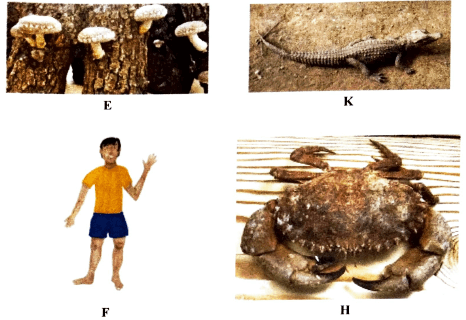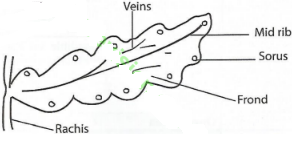THE KENYA NATIONAL EXAMINATIONS COUNCIL
Kenya Certificate of Secondary Education
231/3 Paper 3
BIOLOGY
(PRACTICAL)
Instructions to Candidates
- Write your name and index number in the spaces provided above.
- Sign and write the date of examination in the spaces provided above.
- Answer all the questions in the spaces provided.
- You are required to spend the first 15 minutes of the 1¾ hours allowed for this paper reading paper carefully before the whole commencing your work.
- Additional pages must not be inserted.
- This paper consists of 7 printed pages.
- Candidates should check the question paper to ascertain that all the pages are printed as indicated and that no questions are missing.
- Candidates should answer the questions in English.
- You are provided with a piece of specimen N and the following reagent S
- Dilute hydrochloric acid
- Dilute sodium hydroxide
- Dilute hydrogen peroxide
- Water
- You have also been provided with the following apparatus: - Three test tubes
- 10ml measuring cylinder
- Scalpel
Procedure- Label the test tubes 1, 2 and 3.
- Macerate (chop into tiny pieces) half of specimen N.
- Place equal amounts of the macerated specimen into test tubes 1 and 2.
- Cut the remaining half of the specimen into two equal pieces.
- Place one piece into test tube 3 and reserve the remaining piece.
- Add about 2cm3 of dilute hydrochloric acid into test tube 1, add about 2 cm3 of sodium hydroxide into each of test tubes 2 and 3.
- Add about 5 cm3 of hydrogen peroxide into each of the three test tubes, 1, 2 and 3.
-
- Observe the amount of effervescence in each test tube and complete the table below.
(10 marks)Test tube Contents Amount of effervesence observed
Explanation 1 2 3 - Use the reagents provided to test for the food substance present N in the piece of specimen reserved from (a). Observe and record in the table below.
Procedure Observation Conclusion
- Observe the amount of effervescence in each test tube and complete the table below.
- You are provided with photographs E, F, K and H, together with specimens G, J, L and M. K F H

Using observable features in the photographs and specimens provided:- Place with a reason, each of the following organisms in their respective Kingdom, Division or Phylum.
- G (2 marks)
Division.
Reason. - E (2 marks)
Kingdom.
Reason. - M (2 marks)
Division.
Reason. - H (2marks)
Phylum
Reason
- G (2 marks)
- State two features in the following organisms that make them to be placed in different Classes:
- F and K (2 marks)
- J and M (2 marks)
- Make a labelled diagram of specimen L. (1 mark)
- Explain the difference in the mode of reproduction exhibited by E and J. (1 mark)
- Place with a reason, each of the following organisms in their respective Kingdom, Division or Phylum.
- You are provided with a specimen labelled P on a tile.
-
- Name the Class to which the specimen belongs. (1 mark)
- Give three reasons for your answer in (a)0) above. (3 marks)
- State three ways by which the organism is adapted to movement in its habitat. (3 marks)
- State two functions of the part labelled Q. (2 marks)
- Carefully lift the part labelled Q and observe the underlying structure.
- State the main function of the underlying structure observed. (1 mark)
- State three ways by which the structure is adapted to its function. (3 marks)
-
INSTRUCTIONS TO SCHOOLS
BIOLOGY (PRACTICAL)
CONFIDENTIAL
The information contained in this paper is to enable the head of the school and the teacher in charge of Biology to make adequate preparations for this year's Biology practical examination.
No one else should have access to this paper or acquire knowledge of its contents. Great care must be taken to ensure that the information herein does not reach the candidate either directly or indirectly. The teacher or laboratory technician in charge of Biology should not perform any of the experiments or give any information related to these instructions to the candidates.
- Besides other laboratory fittings and apparatus, every candidate would require the following:
- Apparatus:
- A scalpel:
- A white tile
- Three test tubes;
- A 10ml measuring cylinder,
- Means of labelling. three per candidate
- A dropper
- A hand lens
- A white tile:
- A piece of tissue paper
- Specimens:
- Three weeks old bean seedling, labelled specimen J
- Three weeks" old maize seedling, labelled specimen M
- A medium-sized fish about, 12 cm long (tilapia/trout). labelled specimen P and supplied on a tile. Label the operculum Q
- A twig with concs and leaves (of any tree species), labelled specimen G:
- A block of irish potato, measuring 2 cm by I cm, specimen N
- A mature fern leaf labelled specimen L
- Each examination centre will be required to provide the following:
- Hydrogen peroxide (about 12ml for every candidate)
- Hydrochloric acid (about 8cm3 of concentrated acid for 4000 candidates),
- Preparation of solutions
- Solution E
Is prepared using hydrochloric acid procured by the school 8.6cm3 of the concentrated acid is diluted with 1,000 cm3 of distilled water and supplied to the candidates a dilute hydrochloric acid. Supply each candidate with 4cm3 of the solution. - Solution F
Hydrogen peroxide is procured by he school (20 volume) and supplied to candidates as hydrogen peroxide. Supply each candidate with about 12 m3 of the solution - Solution G
ls propared using substance J and K supplied.
Dissolve 1g and 0.5g in 100ml distilled water and supply to candidates as iodine solution. Supply each candidate with about 2cm3 of the solution.
- Solution E
- Apparatus:
MARKING SCHEME
| Test tube contents | Amount of effervescence observed | Explanation | |
| 1(a) | HCL+ macerated specimen N + H2O2 |
No/little effervescence/foam/frothing/bubbling | Although there was adequate surface area exposed (by macerating the potato) for enzymatic action, the acidic medium/low pH did not favour the working of the enzymes/catalyze/increase rate of enzymatic reaction/denature enzyme; |
| NaOH+ macerated specimen N + H2O2 |
Vigorous/rapid/high/a lot of/more effervescence; | Adequate surface area exposed ( by macerating the potato) for enzymatic action; favourable/suitable pH/alkaline medium/high pH for enzymatic action; |
|
| NaOH+ cube of sppecimen N + H2O2 | Moderate/average/medium effervescence | Less/little surface area exposed for enzymatic action; |
(Max 10 Marks)
| Procedure | Observation | Confirmation | |
| 1(b) | Add( a drop of the) iodine solutiobn provided to specimen N; | Blue-black colour observed; |
Starch present ( in specimen N); (3 marks) |
(13 marks)
| 2(a)(i) | Specimen G | Division: Spermatophyta/ Spermaphyta; Reason: Seed-bearing/naked seeds/green; |
(2 marks) |
| (ii) | Specimen E | Kingdom: Fungi/Mycophyta; Reason: feed on dead matter/saprophytic/have hyphae/Rhizoids/mycelium/lack chlorophyll/non-green; |
(2 marks) |
| (iii) | Specimen M | Division: Spermatophyta/ Spermaphyta; Reason:Presence of leaves/stems/root; Have chlorophyll/are green; Remains of fruit/seed/cotyledons; |
(2 marks) |
| (iv) | Specimen H | Phylum: Arthropoda; Reason: Segmented body/presence of limbs/jointed appendages; Presence of exoskeleton/external skeleton/bilateral symmetry; |
(2 marks) |
| (b)(i) | Specimen F has its body covered with hair while the body of specimen K (crocodile) is covered with scales; Specimen F has the opposable thumb in its pentadactyl limb while the limbs of specimen K are uniform; Specimen F has mammary glands while specimen K does not have; Specimen F is viviparous while specimen K is oviparous; |
(2 marks) |
| (ii) |
Specimen M and J
|
(2 marks) |
| (c) | SPECIMEN L |
(1 mark) |
| (d) | Specimen J (bean) is a flowering plant, reproduces sexually; Specimen E reproduces asexually/sporulation by spores; |
(2 marks) |
| 3 | a | Pisces;
|
1 mark
3 marks |
| b | Adaptations
|
(3 marks) | |
| c |
|
(2 marks) | |
| d(i) | For gaseous exchange; | (1 mark) | |
| (ii) |
|
(3 marks) |
Download Biology Paper 3 Questions and Answers - KCSE 2020 past papers.
Tap Here to Download for 50/-
Get on WhatsApp for 50/-
Why download?
- ✔ To read offline at any time.
- ✔ To Print at your convenience
- ✔ Share Easily with Friends / Students

